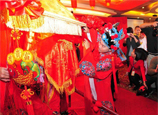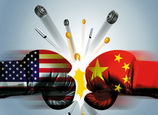
Recent developments raised fears in Hong Kong because they mirror what happened in the special administrative region in 2009, when the mainland's fast recovery from the global financial crisis drew huge amount of funds created by quantitative easing in the US to Hong Kong.
That directly created the asset bubbles now in Hong Kong. Pushing asset prices even higher is dangerous because a sudden and collective de-investment would pose a serious test of the strength of the region's financial system.
In 2008 and 2009, more than HK$640 billion flowed into Hong Kong in search of a safe haven, which helped double property prices, official figures show.
For now, economists, market watchers and government officials' views differ on what the incoming funds are betting on and whether they are speculative in nature.
K. C. Chan, secretary for financial services and the treasury, told reporters on Oct 24 that it will take further observation to determine if the funds flowing in are "hot money".
Frances Cheung, a senior strategist at Credit Agricole CIB, also said that it's hard to classify the funds as "hot money".
In an e-mail to China Daily, she said that aside from QE3, the re-appreciation of the yuan onshore is also helping attract extra inflows. And Hong Kong's high credit rating is another attractive factor.
"In recent years, whenever the RMB was expected to appreciate, the bet had been for the Hong Kong dollar to strengthen further if it was de-pegged from the US dollar," she wrote.
















 Heavy snowstorm wreaks havoc in NE China
Heavy snowstorm wreaks havoc in NE China


![]()
